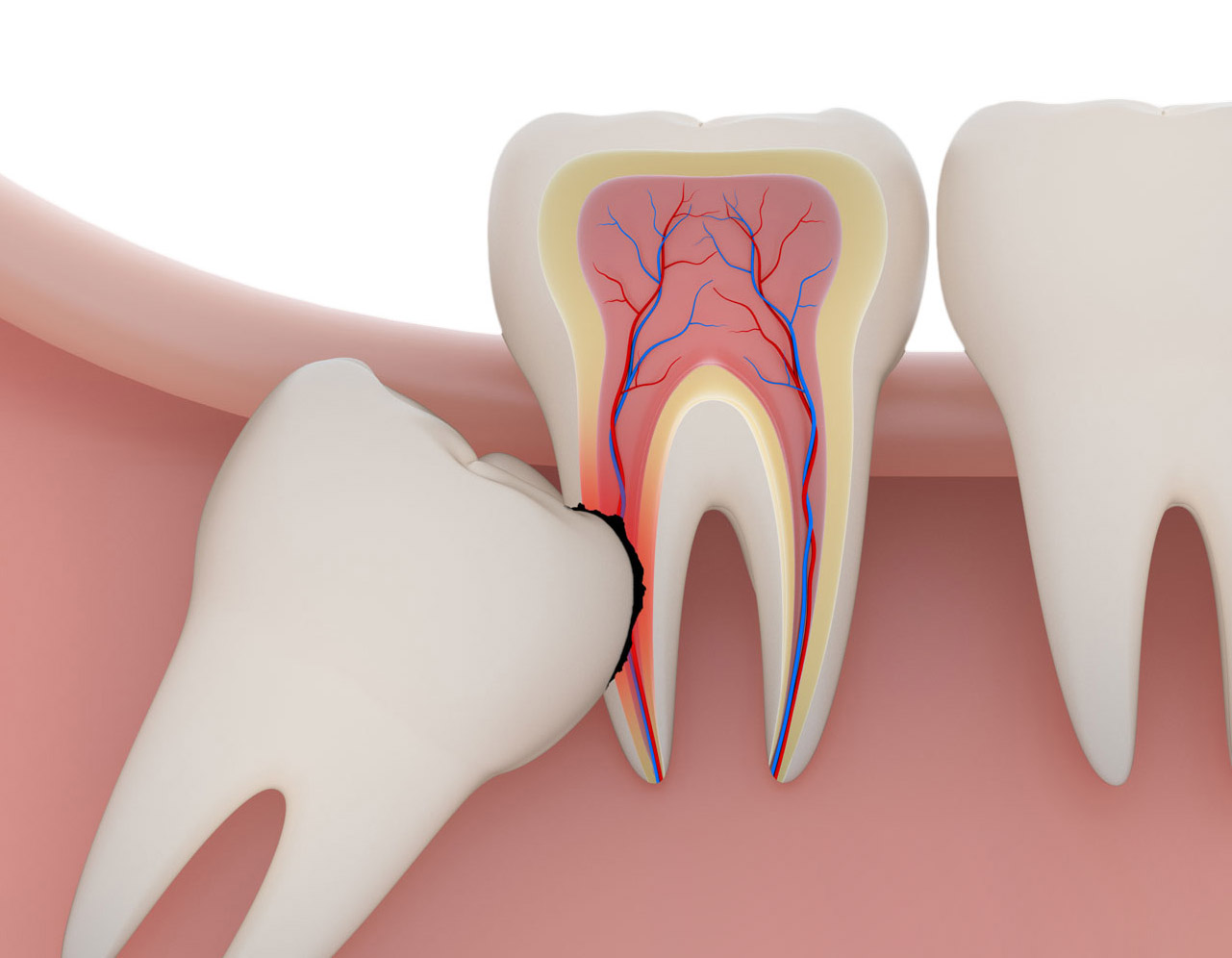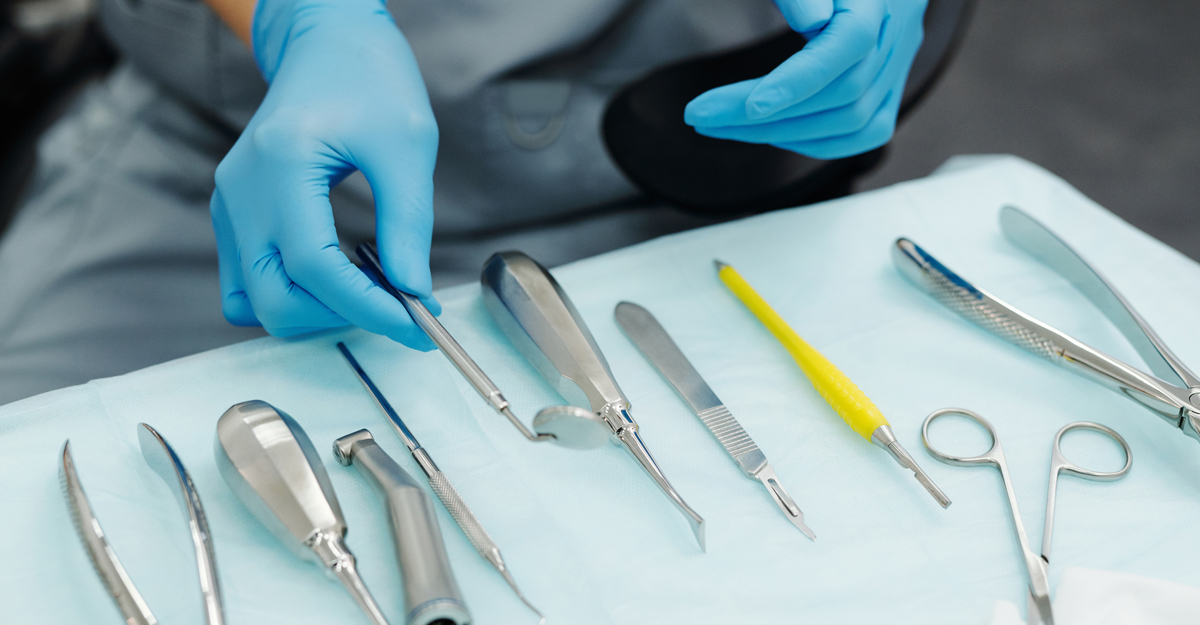Oral surgery is a branch of dentistry that deals with surgical treatment and care of the hard and soft tissues of the oral cavity.
Impacted tooth is the tooth retained in the bone for different reasons. This often happens with third molars, also known as wisdom teeth. They can be either completely impacted, covered with gums and/or bone or semiimpacted, partialy visible intraorally. They can cause pain, swelling, difficulties in mouth opening, damage of adjacent teeth. Often there is not enough space for them to erupt in a proper position, making the oral hygiene more difficult.
Canines are also often impacted. In some cases, by using the orthodontic – surgical approach, we can help them erupt and align them in correct position.
The decision on weather the tooth should be extracted or not is made after the clinical and x- ray analyses.

Root resection is the final attempt in trying to preserve the tooth. Unlike the endodontic root canal treatment, we approach the lesion (chronically inflamed tissue) directly, through the bone. The lesion is removed, as well as the afected part of the root. Regardless of symptom relief, regular check-ups and periodical x-rays are necessary for monitoring the resected teeth.
This is a surgical procedure of removing the soft tissue connecting the lip (upper or lower) or the tongue with the bone. In adults, it is usually performed prior to reconstruction with full dentures, in order to achieve better denture stabilisation. Also, it is done to prevent gingival recession (lower teeth are most commonly affected) and in children to prevent the increase of the distance between central incisors (diastema) and achieve better movement ability of the tongue (ankyloglossia or tongue-tie).

This reffers to removal of frenulums and plicas that may impede the stabiisation of the denture, then vestibuloplasty (restoring the alveolar ridge hight), clinical crown lenghtening to obtain the sufficient amount of tooth tissue for the prosthetic restoration, correction of fibromatous tuber, alveolar ridge correction.
Many studies have proven long term success of dental implants. Studies of companies from the world's leading implant manufacturers , have shown 97-99% success rate on a ten year period of time. Today we have wide range of different implants, supporting the individual aproach to each patient.
With dental implants we can solve the problem of one or several missing teeth, without grinding the adjacent teeth
They also allow us to solve the cases of shortened dental arch or edentulous jaws. In this way we are avoiding removable dentures (both partial or total), giving the patients a more comfortable solution. Also, we can use dental implants to stabilize total dentures.
Dental implants are made of Titanium, which is biocompatible material and does not harm your health in any way. After the process of osseointegration, they stimulate the bone, preventing its resorption. They also provide normal chewing and aestetics. On the other hand, conventional bridges, which are not supported with dental implants, do not stimulate the bone and only replace the crown of the missing tooth.

In order to decide where to place an imlant, we need clinical examination and x-ray analysis (dental x-ray, orthopan, 3D – CBCT). It is very important to consider the possible ways of tooth replacment immediately after the extraction. In this way we can prevent some undesirable changes such as leaning of the adjacent teeth, further “growing” of the antagonist teeth, resorption of the bone, the expansion of the maxillary sinus. Because of these changes, extra procedures like bone augmentation, sinus lift procedures and orthodontic tooth movement might be neccessery.
The surgical procedure is done in local anaesthesia and patients usually describe it as unpainful and not difficult. After the intervention, patient receives thorough instructions about oral hygiene and the use of medicaments. Regular check-ups are neccessary.The healing process requires 2-6 months. After that, the definite prostodontics can be done. Sometimes it is possible to place a temporary restoration imediately after the implantation for better function and esthetics. However, healing time is individual for each patient.
Sedation is also a good solution for surgical procedure and makes it more comfortable and less stressful for patients who need dental implants.
Oral hygiene is the most important for the long term success of dental implants. This includes every day use of interdental brushes, dental floss and antiseptics. Regular check-ups are also necessery to assess the quality of oral hygiene and also the status of existing dental implants.